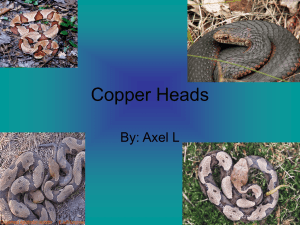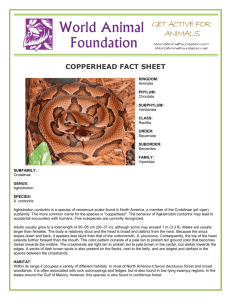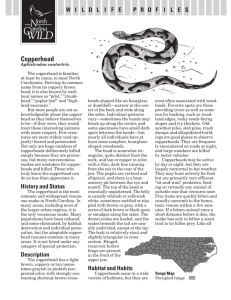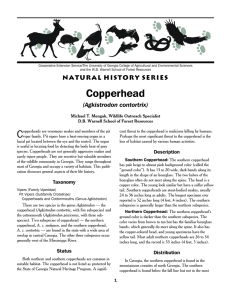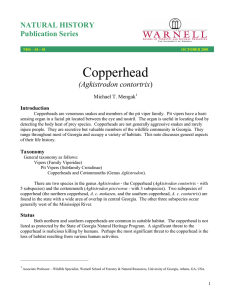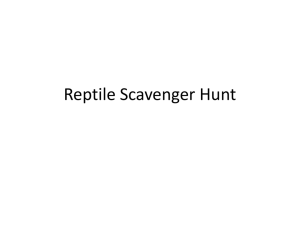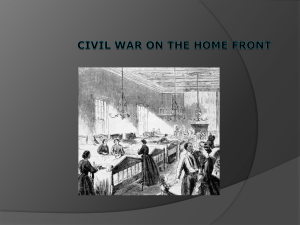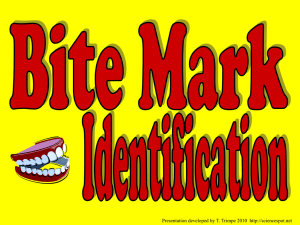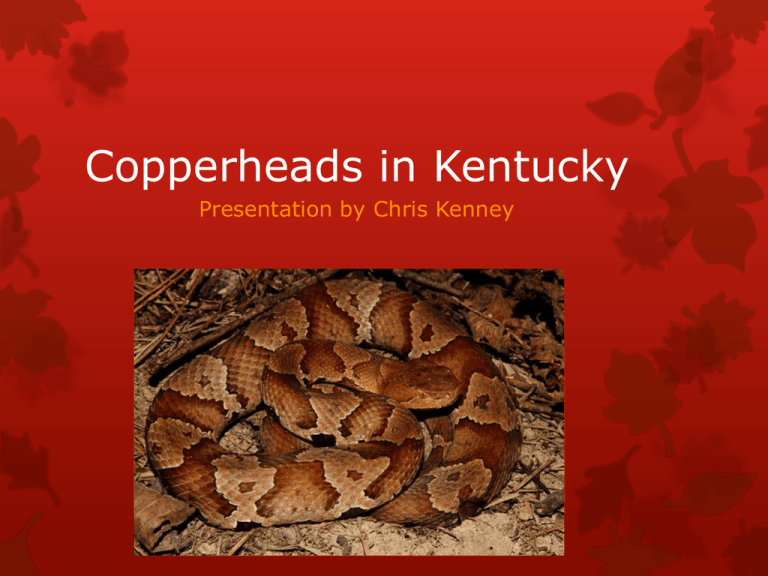
Copperheads in Kentucky
Presentation by Chris Kenney
What states can Copperheads be
found in?
Copperheads can generally be found in a number of
habitats including, but not limited to:
Wood slab piles, sawdust piles, rock piles and brush piles
created by land clearing, or along utility rights of way
What are the distinctive features
of a copperhead?
Hourglass crossbands on the body that are narrow across the
top, and wide across the side
Coppery brown, to bright orange in color
Average length 30 inches
Unmarked, triangular copper colored head
What do they eat?
Mating habits…
Mating occurs in the spring and young are born in late
summer or early fall
Females give birth only every other year
Lifespan generally lasts about 15 years
How do Copperheads kill their
food?
Fangs inject prey with hemolytic venom (breaks down
red blood cells which subdues prey for easy swallowing)
They are most active April through late October, diurnal
in the spring and fall, and nocturnal during the summer
How deadly are Copperhead
bites?
Copperhead bites rarely lead to fatalities of humans
Bites are usually to protect themselves, or to subdue their prey for a
meal
An average of 5 to 15 people die each year of venomous snake bites
Symptoms of a Copperhead bite include:
Bleeding
Breathing difficulty
Low blood pressure
Nausea and vomiting
Numbness and tingling
Pain at site of bite
Shock
Skin color changes
Swelling
Thirst
Tiredness
Tissue damage
Weakness
Weak pulse
Treatment of a snake bite…
Victim should be immobilized, transported to hospital as
quickly as possible
Wound cleaned with soap and water
Tourniquet is applied two to four inches upstream of the
bite area to cut off any spreading
Antivenum is given through intravenous adminstration
Difference between venomous
snakes and non venomous?
Non-venomous snake
1.Round pupils
2.No sensing pit
3.Head slightly wider than neck
4.Divided anal plate
5.Double row of scales on the underside of the tail
Venomous snake
1.Elliptical pupils
2.Sensing pit between eye and nostril
3.Head much wider than neck
4.Single anal plate
5.Single scales on the underside of the tail
Myths of Copperheads…
Myth…
Fact…
1. Copperheads smell like cucumbers…
1. True and false, when approached, a
Copperhead secretes a smell that could be
mistaken as similar to a cucumber, but at
rest doesn’t have any smell
2. Copperheads travel in pairs…
3. The female Copperhead lays eggs and
protects them…
4. A Copperheads venomous bite is lethal to
humans…
2. Copperheads compete for food and
sleeping space with other Copperheads
3. Female Copperheads give birth to live
babies, they do not lay eggs
4. Very rarely are Copperhead bites
deadly to humans if treated properly
Images…

